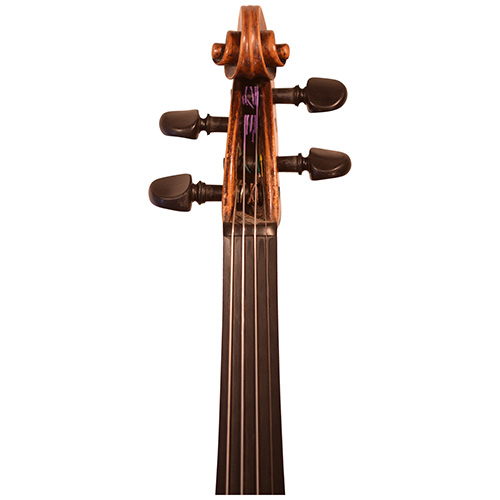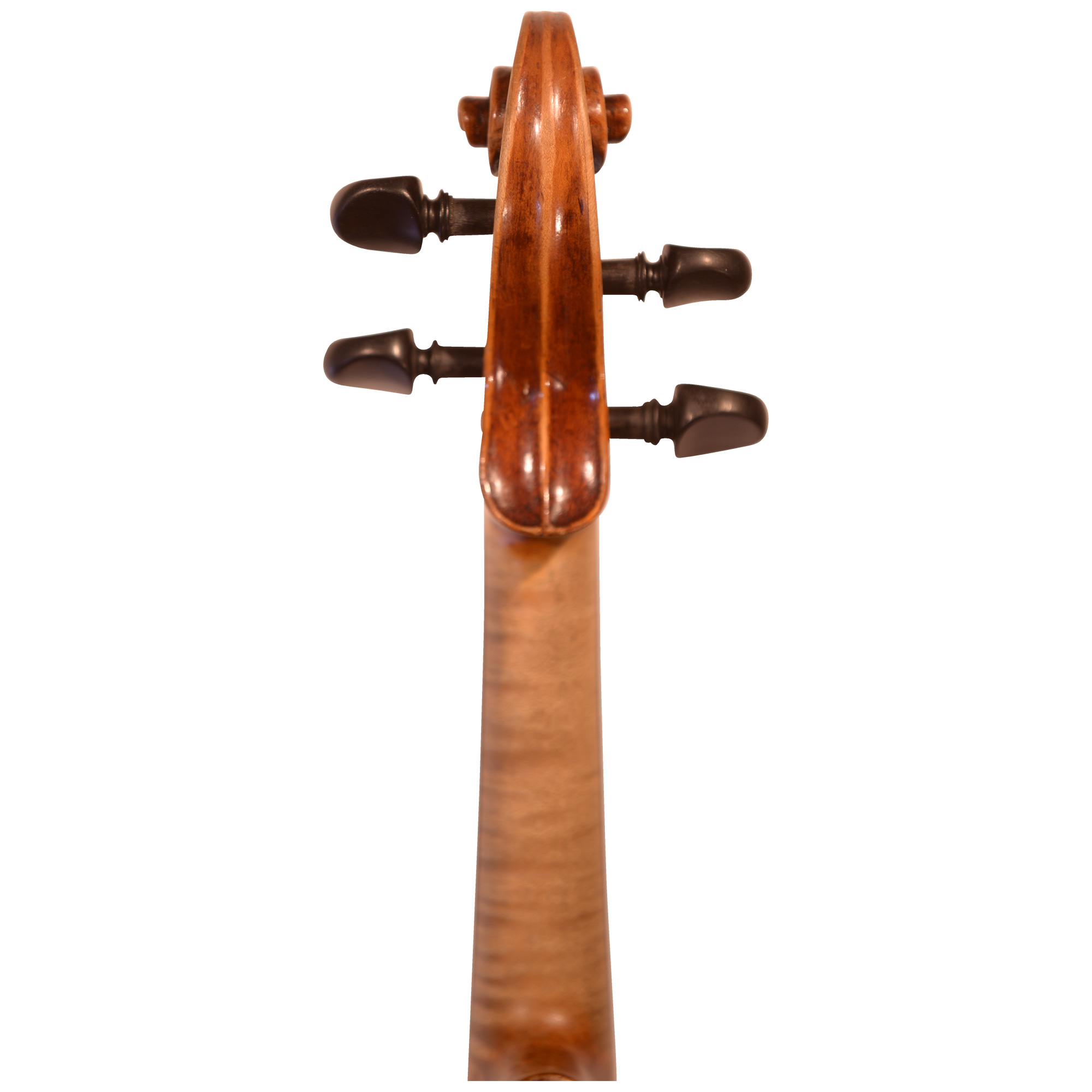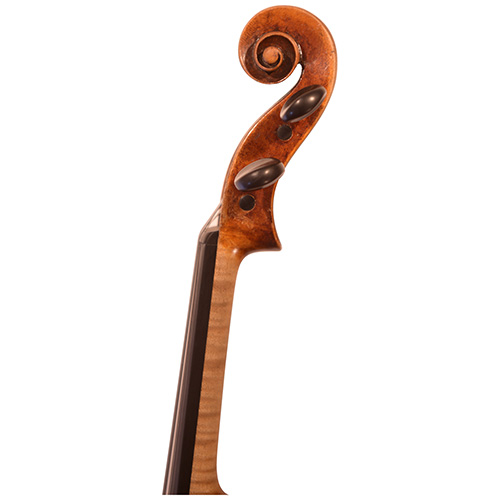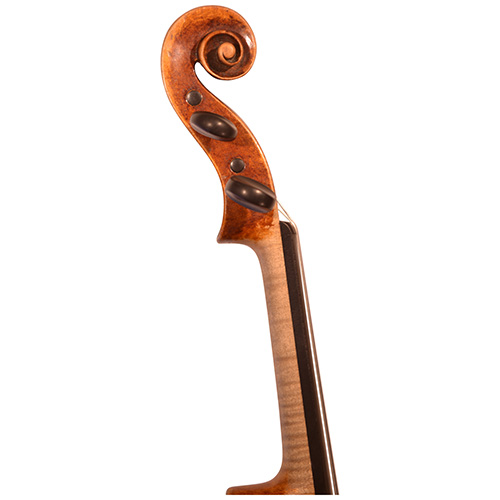Topics
Here we introduce a fine Violin - Nicolo Amati 1677 3/4Violin, Cremona, Italy.
2022.09.12

Nicolo Amati 1677 3/4Violin, Cremona, Italy
About 100 years after the violin-making history began with Andrea Amati, its art reached a high degree of perfection under Nicolo Amati and his apprentices. There exists no certain record that Francesco Ruggieri, Antonio Stradivari, G. B. Rogeri and Jacob Stainer worked in Nicolo’s atelier, but these masters clearly followed and learned Nicolo’s styles to establish the ground for violin-making.
This lovely violin is an example of Nicolo Amati’s authentic work for a child, dated 1677, with the body length of 330 mm, that is 3/4 size of today.
Its top plate is made of spruce with regular streaks of grain, and its back is composed of only one beautiful plate of slab cut that reminds us of cloudy sky, with so called bird’s eye grain. It is clad in deep orange-gold varnish.
Not only its elegant scroll was formed carefully, but also the whole of the violin was made with a sense of high precision. That is to say, Nicolo Amati’s rich characters are seen prominently.
Its sound is very powerful, but on the other hand, it has deep sweet and delicate tones.
Three hundred years ago, the techniques of the violin playing were on an elementary level. Performance was confined to opportunities in front of wealthy families and it was rare that parents had their children take violin lessons. However, this small violin made by the early master of Italy came down to our generation to still exist, which tells that there were some parents who would like to have their children learn the violin playing. Very interesting is that two brothers who acquired wide fame during a decade from about 1830 played this violin in concerts.

They were known as the Eichhorn Brothers of Coburg, Germany, whose father trained four sons of his for musical careers. The Eichhorn Brothers, who are featured here, were Ernst (1822-1844) and Eduard (1824-1897), who were violinists. The two others were Albrecht, a cellist and harpist, and Alexander, who was the youngest and had a long career as the musical director in Coburg.
It is said the two young brothers owed much to their father for their success. The father traveled widely with them and performed with them as a soloist of the newly invented bass horn. His first name was not mentioned on any record but was simply referred to as the father of the young artists.
Concert programs of the year of 1830 are excellent in typography on fine paper and are still so clearly legible as at the time of their distribution.

The name of the Eichhorn Brothers was found on some concert programs of 1834 in London. “These clever children, the eldest of whom is so young as twelve years old, had the honor to perform before the King of England, the King of Bavaria, the King of Wirtemberg and the King of France, who kindly condescended to decorate them with the Cross of Honor.” Another comment was that “This is translation of a testimonial letter from Louis Spohr. “I consider it my duty to draw the attention of music lovers to the wonderful musical talent of these young children (the Eichhorn Brothers). My expectations on their performance had been highly raised by public journals, but actually they greatly surpassed my expectations. With amazing precision and purity of tone, these boys treat the most difficult instruments (the violin). I am glad to confess that I have never thought before that talent for music could attain cultivation in so tender an age.” Date at Cassel, April 24th, 1832, signed by Louis Spohr.”
The time of “Wonderful Kids” passed away in years, and the brothers became members of the Coburg-Gotha Royal Orchestra. The violin remained in the possession of the family even after the death of Eduard Eichhorn on August 3rd, 1897. So later as in 1910, Hermann Eichhorn, son of Eduard, had the violin examined and evaluated by several German experts.
In 1943, it was acquired by Levis & Sons in Chicago, the prominent musical instrument dealer in America, for their collection and was preserved as a violin of unique characters of Nicolo Amati’s artwork. Recently it was purchased by Mr. and Mrs. Jack Sonies for their daughter, Barbara, a talented pupil of George Periman, who was a well-known teacher of the violin in Chicago.












